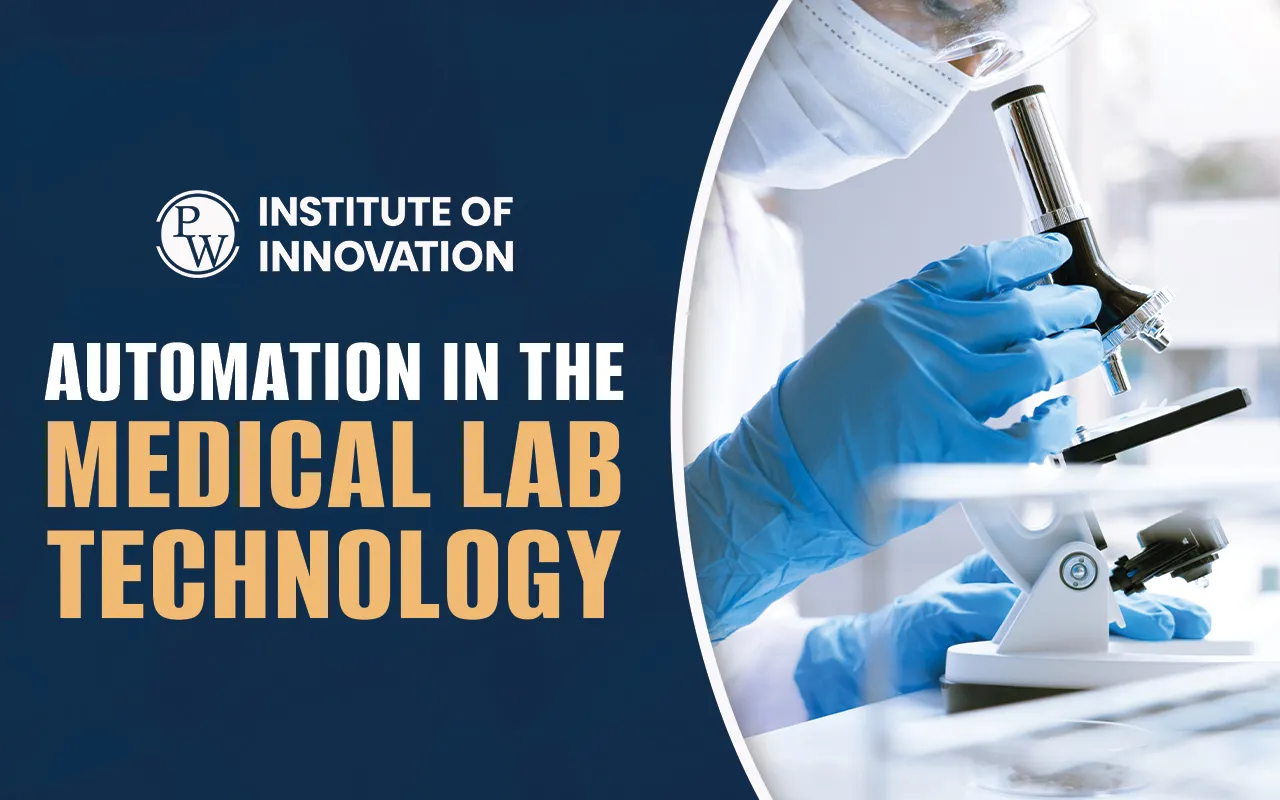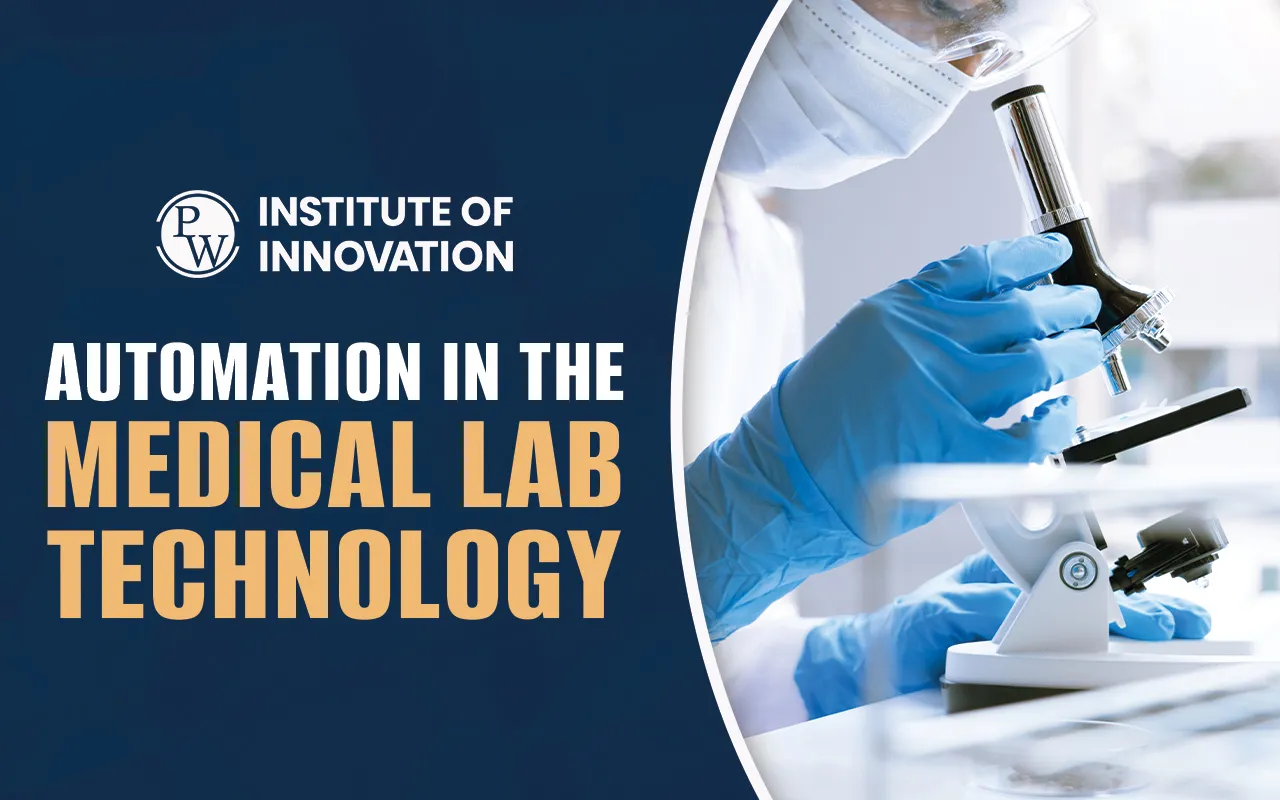

Medical lab technology is the very cornerstone of modern healthcare. It forms an array of diagnostic procedures concerning blood, tissue, and other bodily fluid analyses, and these help avert, monitor, and treat diseases while maintaining patient health. But what defines medical laboratory technology? It is a domain where professionals skilled in laboratory work are called upon to use advanced techniques and instruments to provide accurate test results that guide medical decisions.
With the advancement of automation, medical lab technology is getting updated to a greater extent; that is why these systems can speed things around the lab, making work easier and nearly error-proof. If you are a student exploring career options or a working professional in the field, gaining knowledge about medical lab technology automation is very important. This blog will take a glance at how automation would affect diagnostics, their pros and cons, and the future of acceptance in medical lab technology.
What Is Medical Lab Technology?
Before going further into automation, it's essential to clearly define what medical lab technology is. It is a field in which lab technicians and pathologists test patient samples for diseases such as diabetes, cancer, or infection. These tests might include CBC (complete blood count), urinalysis, microbiology cultures, and genetic testing.
Traditionally, medical lab processes had been mostly tied to manual procedures, demanding time and filled with human error. However, with the advent of automation, laboratories can now efficiently handle hundreds of samples within minutes with the utmost precision. Therefore, this is setting off the most serious transformation in how health care works; diagnostics are bound to achieve an unprecedented speed and trustworthiness.
The Rise of Automation in Medical Lab Technology
Once considered an extravagant additional benefit, automation in medical lab technology is now becoming a dire necessity. From robotic sample handlers to AI analyzers, laboratories are evolving. Automated systems accomplish repetitive tasks such as sample processing, sample sorting, pipetting, and data entry, thus freeing up technicians to focus on semi-complex to complex pain assessments.
One great advantage of automation in the medical laboratory is speed; what took hours before is now done in minutes. Speed is critical in medical emergencies where the timely reporting of results could mean life or death. Automation cuts back on human errors, allowing those results to be consistent and accurate.
Key Automated Technologies in Medical Lab Technology
There are numerous cutting-edge technologies that fuel automation in medical laboratory technology.
-
Liquid Handling Robots transfer samples with high precision without spillage.
-
Automated analyzers facilitate speedily processing tests for blood and urine.
-
AI and ML help in detecting abnormalities in test results that humans might miss.
MLT has undergone another revolution, digitalizing laboratory procedures; these systems assist in tracking samples, storing data, and generating reports automatically. Such innovations render medical laboratory technologies rigorously efficient and scalable to meet rising diagnostic demands.
Advantages of Automation in Medical Laboratory Technology
The impact of automation on medical laboratory technology changes profoundly.
-
First, it increases accuracy. Machines pursue more rigid protocols than humans do and hence are less prone to errors, while manual testing tends to make them.
-
Second, it increases productivity. Thus, an automated laboratory can put in higher volumes while quality remains unaffected.
-
Third, reducing turnaround time distinguishes automation. Results are delivered faster to patients and doctors, allowing for the faster treatment of patients.
-
Fourth, it improves safety in the workplace since employees minimize direct contact with dangerous samples.
-
Finally, automation will save significant money in the long run due to optimized resource utilization and the reduction of retests caused by errors.
Do you need help with your homework or preparing for exams?
Study without using the internet
Challenges in Adopting Automation in Medical Lab Technology
Automation in medical lab technology offers some good things but comes with its own set of challenges.
-
One such challenge is the high initial cost of investment for automated machines, which small laboratories will surely find prohibitive.
-
In addition, humans must learn to work with new devices, leading to considerable time and money expenditures to train personnel.
-
Actual fears about significantly diminishing job opportunities may exist as a consequence of automation.
-
Instead of manual tasks, technicians will spend their time interpreting data that was previously interpreted by automation.
The Future of Automation in Medical Lab Technology
The automation of medical lab technology is the future, without a doubt. Initially, we will get advanced AI diagnostics, fully automated lab tests, and portable testing products. With this in mind, healthcare will become enhanced for ease of access, particularly when it relates to the more remote areas.
With this ever-evolving and progressive automation, medical lab technology will soon turn into technical personalization that focuses on prevention.
Here are the prime few key trends in future automation for medical lab technology that will impact this industry in the upcoming years.
1. AI and Machine Learning in Diagnostics
Artificial Intelligence (AI) and Machine Learning (ML) are now transforming medical lab technology to enhance the efficiency of diagnosis. Analysis of the vast datasets during comprehensive analysis of blood tests, imaging, and genetic sequencing for early detection of diseases like cancer can be done easily.
B.Voc graduates can work on:
-
Developing AI-based diagnostic algorithms
-
Working on predictive analytics for disease detection
-
Integrating deep learning models into lab equipment
2. Robotics and Automated Sample Handling
Robotics is already a game-changer in medical lab technology, but advanced implementations aimed toward ever-greater efficiency are yet to come. Fully automated robotic systems would take samples through sorting, pipetting, and storage with zero human intervention.
Engineers could contribute by:
-
Designing next-gen lab robots aimed toward precise tasks
-
Improving automated liquid handling systems
-
Developing collaborative robots (cobots) working hand in hand with lab technicians
3. Lab-on-a-Chip (LOC)
The Lab-on-a-chip technology enables a high program of miniaturization of lab processes into a small chip so that rapid and portable diagnostics can take place. This is especially important in instant testing that takes place in remote areas.
The students of B.Voc with biomedical or electronics engineering can think of:
-
Designing microfluidic devices for instant blood tests
-
Creating wearable diagnostic sensors
-
Developing smart chips that detect infections in minutes
4. Blockchain for Secure Lab Data Management
Increasing digitization requires good data security in medical laboratory technology. With the help of blockchain technology, the patient reports could be stored and shared without tampering.
B.Voc professionals may work in these areas:
-
Building blockchain-based lab record systems
-
Enhancing cybersecurity for diagnostic databases
-
Developing decentralized health data platforms
5. Internet of Medical Things (IoMT) for Smart Labs
The Internet of Medical Things (IoMT) connects the laboratory equipment to a cloud system to allow for real-time monitoring and remote diagnostics.
B.Voc engineers could drive innovation in:
-
Smart lab equipment with IoT integration
-
Cloud-based diagnostic platforms
-
AI driven remote lab management systems
6. 3D Printing for Customized Laboratory Equipment
3D printing continues to augment medical technology by making it cost-effective for the labs to fabricate everything that they need-from pipettes to specialized analyzers.
Explore using 3D print for:
-
3D-printed laboratory disposables
-
Custom Diagnostic Devices
-
Bioprinting lab-grown tissues
7. Personalized Medicine And Automation
Automation leads personalized medicine immediately. In personalized medicine, treatments are tailored according to the genetic and metabolic profile of the patient.
B.Voc typically studies the following in this area:
-
Automated genomic sequencers have been developed.
-
Creating AI along with personalized treatment plans.
-
Automated Drug Compatibility Testing
PW IOI: Why its B.Voc Program is the Ultimate Launchpad for Future Tech Leaders
This program, PW IOI Medical Laboratory Technology Course is transformative because it attempts to bring real work experiences into traditional education.
For innovators, engineers, and graduates from PW IOI, it is not just a program but a ticket into the world of innovation and employability in 2027 and beyond. Below are some words from PW IOI’s enrolled students.
According to Mohit Jangid (SOT, 2024-2028), academics are mixed with practical learning, which is arranged by hackathons, student-led initiatives, and mentorship from IIT alums and top-tier professionals (formerly of LinkedIn, PayPal, Meta)-the students are adequately prepared, not simply from the age-old textbooks. Coding and projects are key learning milestones in developing entrepreneurial skills to cultivate graduates ready to enter the competitive industry, whether with tech giants or good health institutions.
As Ansh Raj Shukla (SOT, 2024-2028) states, the liveliness of the campus facilitates growth and long-term connections, while Vidhi Roy (SOH, 2024) comments about PW's hallmark excellence.
For innovators, engineers, graduates from PW IOI are not just a program but a ticket into the world of innovation and employability in 2027 and beyond.
FAQ
What is lab automation in medical technology?
Does automation reduce the need for lab technicians?
What are some examples of automation in medical labs?
Should students be exposed to automation through lab tech courses?

